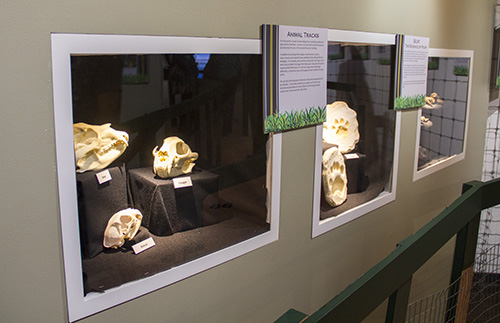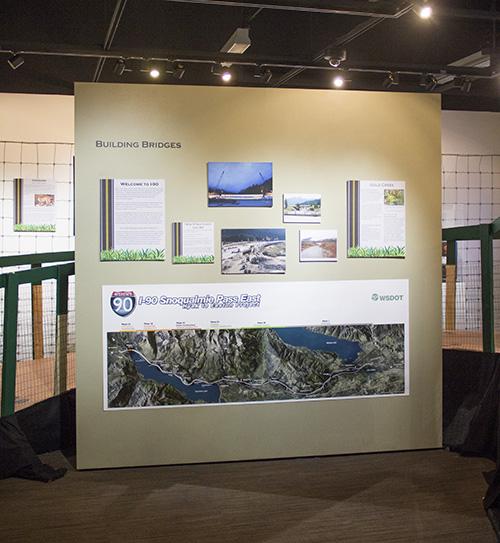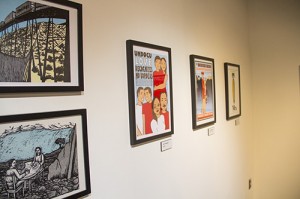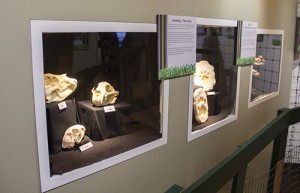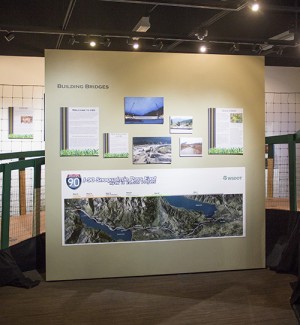Migration theme inspires poetry
October 26, 2014
Last Thursday, when the Museum of Culture and Environment in Dean Hall celebrated their fifth anniversary and opened their “Migration, Now” exhibit to the public, they also gave students a new source of inspiration for students of the professional and creative writing program.
The most recent project for Central English Professor Xavier Cavazos and his ENG 365 poetry writing class has been focused on the artwork of the “Migration, Now” exhibit.
The assignment that Cavazos created requires students to pick a piece from the display and write a poem in the voice of that piece.
“From a pedagogical perspective, it’s really important that poetry students start to speak in voices that aren’t their own,” Katharine Whitcomb, poetry curator of the museum and English professor, said. “To get out into the world and look at things and imagine themselves in different situations and themselves in different contexts besides the ones they find themselves in every day.”
The assignment got somewhat mixed reviews from students of Cavazos’ class. Some students have appreciated the challenge, while others found it difficult to personally connect to the art of the exhibit.
“I thought it was a good first exercise for our first poetry class,” Laekin Dunoskovic, senior professional and creative writing major, said. “It seemed to help students who weren’t as familiar with poetry, write something of substance. Most of my poetry in the past was written when looking at something, whether it be a picture or a beautiful thing in nature, so I was fond of the project.”
Other students, like senior professional and creative writing major Kathryn Landoe, had a rather different opinion of the assignment.
“It was challenging because the exhibit is on migration, and I am white so I have little understanding of how people are actually affected by migration laws and deportation,” Landoe said in an email. “It was also difficult for me because the other half of the exhibit was on animal migration, and I have no interest in nature.”
Landoe is writing her poem based on the piece “Welcome Human/Alien,” by César Maxit.
Cavazos saw the assignment as an opportunity to diversify his curriculum. He also voiced that, although he does have a slightly deeper personal connection to the exhibit, he had no agenda with the assignment.
Cavazos says the assignment was more about teaching the students to speak in a voice other than their own.
“We’ve lost our way as poets as well,” Cavazos said. “We’re too wrapped up in academia. We’re not in touch with our own communities and what’s happening and injustices and being the voice in that.”
Besides allowing the students to speak from a different perspective as the voice of their chosen art piece, some students took the opportunity of being in the space to explore their feelings on the issue presented to them.
For her assignment, Dunoskovic wrote a poem based on the piece called “Alto a las Deportaciones” by Santiago Armengod.
“Even though it’s art, it’s also a political statement,” Dunoskovic said in an email. “This piece made me think about where I stand on this matter, and I have the stance where I believe people should be able to travel from country to country without the fear of being hurt, insulted or sent back.”
Dunoskovic said “Alto a las Deportaciones” was her favorite because despite not speaking Spanish, she could understand it.
Poetry is not a new medium to the museum. In the past, the museum has hosted work from multiple poets, including Poet Laureate of the time, Kathleen Flannigan, whose work was displayed as part of the “Particles on the Wall” exhibit in 2012. This exhibit addressed the effects of the Washington-based nuclear site Hanford.
“Because the nature of the exhibits are often to do with crises in the natural world or elements that explore human interaction with the natural world, poetry is very effective in bringing the visitors of the museum into a place where they can have an experience through someone’s words,” Whitcomb said.



